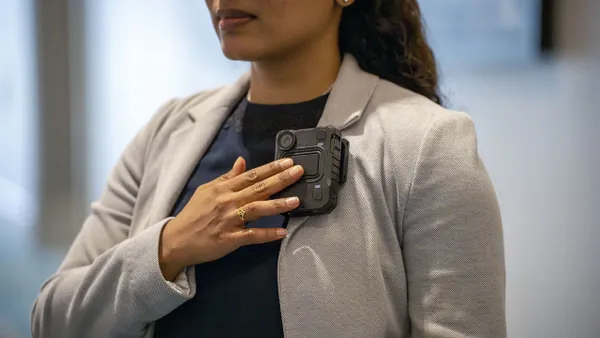December's Coronavirus Response and Relief Supplemental Appropriations Act set aside over $54b in federal relief funding for K12 school districts. While the funds are essential to ensure future operations of many districts across the country, administrators will be left wondering how much they are getting, and whether or not it will be enough to cover their critical needs.
While some districts may be looking to expand, others may need to replace failing infrastructure. But how can district leaders make sure that they are getting the most out of their stimulus funds?
Eliminate your biggest barriers to modernization first
A deferred maintenance backlog costs millions in wasted energy and wasted time. The siphoning of funds into outdated and failing infrastructure also means paying utility companies an unnecessary excess and delaying operational improvements that can quickly reduce costs, such as automation and energy-efficient technology.
The second biggest budget item—and burden—for most school districts is maintenance, utilities and operations. This expenditure is significantly more than most districts realize, often hundreds or thousands of dollars each year. Once the infrastructure has been updated, the next step is streamlining the daily operation of all systems to free up resources.
The relief act itself specifically calls out "repairing school facilities, especially ventilation systems, to improve air quality and reduce the spread of COVID-19" as a potential use for the funds. Outdated HVAC and plumbing systems are the top environmental factors that affect the health of a facility and its occupants. Simple system upgrades are the key to a healthier building.
As a bonus, improving your infrastructure will have beneficial, far-reaching financial impacts beyond creating healthier spaces.
Combine your stimulus funds with a long-term plan
Stimulus funding should not be viewed as a stop-gap, but as a jumpstart on a long-term plan that allows districts to address multiple needs and prepare for future growth. This funding strategy can create a win-win scenario that creates healthier schools today while uncovering savings to help fund additional long-term priorities such as new classroom technology, updated athletic facilities, expanded STEM opportunities and more.
Many districts have successfully stretched their funding by utilizing energy savings performance contracting (ESPCs). Through ESPC, most school districts are able to reduce their energy and operational costs by 20-30% while addressing a backlog of deferred maintenance and making much-needed improvements.
These projects:
-
Identify and capture untapped revenue
-
Lower your operational costs
-
Free up capital to be re-allocated where most needed
-
Create stability in your budget
What's more, when ESPCs are combined with other funding sources, such as stimulus, utility rebates, grants or even third-party financing, districts can make huge progress on their master facilities plans.
Lessons learned from the Great Recession to maximize stimulus
Securing additional revenue streams can be easier than you think. An ESPC partnership also includes support from financial experts to help find, apply, and implement federal- and state-level stimulus opportunities. Schneider Electric helped our clients secure over $260m in stimulus funds in the recovery following the Great Recession.
Madison County School District in Alabama faced a costly dilemma during the last recession. Their deferred maintenance backlog and $4.6m a year in utility costs were straining a reduced budget, forcing the administrators to search for alternative ways to address mission-critical improvements.
By tapping into an ESPC partnership with Schneider Electric, the team was able to find and secure $14m in federally qualified energy conservation bonds, $500,000 in interest-free loans from the state, and $500,000 in rebates from their utility.
In conjunction, the energy efficiency project reduced energy costs by 40%, saving the district $40m over the 20-year project term. The district reinvested $31m of those savings to fund other initiatives district-wide, such as adding STEM programs and improving overall instruction.
Now is the time to prepare for existing and future funding opportunities
Finding experienced partners to support your district with the planning, design and implementation of infrastructure plans will optimize your investment and fast-track approvals. It also affords administrators with the opportunity to be strategic and intentional about how the program is designed to reach short- and long-term goals.
Critical infrastructure projects—such as upgrading aging facilities, modernizing technology and improving student health, safety and comfort—can still be accomplished in the upcoming year without the need to secure new capital. In fact, guaranteed savings projects transform deferred maintenance from burden to asset and streamline operations in the process.
Use this checklist to see if you're ready for stimulus funds.







 Dive Awards
Dive Awards



